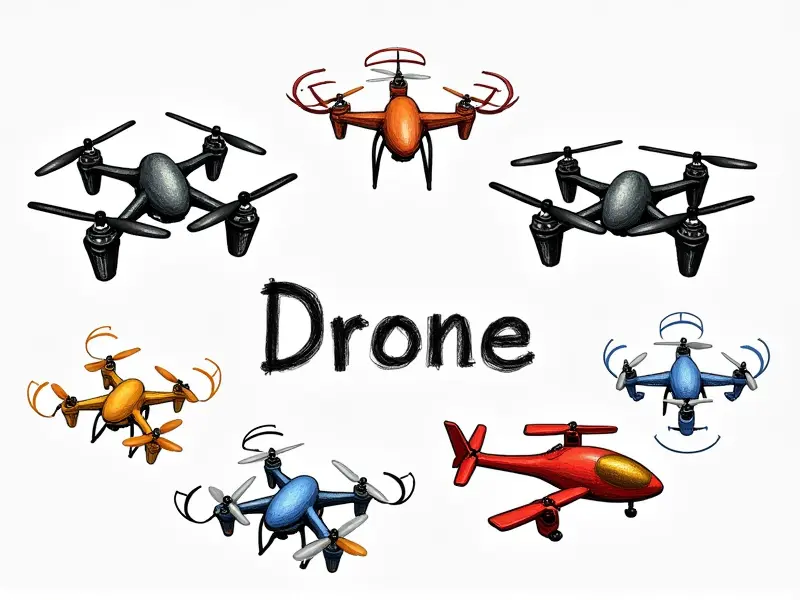What is CCPM in RC helis?

Understanding CCPM in RC Helicopters
Cyclic Collective Pitch Mixing (CCPM) is a critical feature in remote control (RC) helicopters that enhances their maneuverability and performance. This system simplifies the mechanical complexity of traditional helicopter controls, making it easier for pilots to execute complex maneuvers with precision.
Mastering CCPM: RC Heli Control Explained
CCPM involves a central mixing unit that combines cyclic and collective pitch control signals into a single signal. This reduces the number of servos required from four (two each for cyclic and collective) to three, improving efficiency and responsiveness.
Why CCPM is Crucial for RC Helicopters
The primary advantage of CCPM lies in its ability to provide smoother control inputs and reduce mechanical complexity. This system ensures that the helicopter's rotor blades move uniformly, enhancing stability and maneuverability during flight.
Demystifying CCPM: A Guide for Beginners
- Servo Reduction: Traditional RC helicopters use four servos (two for cyclic pitch control and two for collective pitch control). With CCPM, this is reduced to three servos.
- Mechanical Simplification: The mixing unit in CCPM systems combines the signals from the transmitter into a single signal that controls all rotor blades simultaneously.
Maximizing Control with CCPM in RC Heli
To fully leverage CCPM, it's essential to understand how each servo interacts with the helicopter’s control system. By mastering this interaction, pilots can achieve smoother and more precise maneuvers, such as rolls, loops, and inverted flight.
The Basics of CCPM for RC Pilots
CCPM systems are designed to improve performance by reducing mechanical complexity. This means that the pilot's inputs are translated into a single signal that controls all rotor blades uniformly, leading to smoother and more responsive control.
Simplifying CCPM for New RC Helicopter Users
- Understanding Servo Function: Each servo in a CCPM system is responsible for controlling the collective pitch of the helicopter's main rotor blades. This simplifies the mechanical setup and enhances responsiveness.
- Mastering Control Inputs: Pilots need to learn how to input commands that are translated into uniform blade movements, ensuring smooth flight dynamics.
What Is CCPM and Why It Matters
CCPM is a pivotal technology in RC helicopter design. By reducing the number of servos required for control, it simplifies mechanical complexity while enhancing performance. This makes advanced maneuvers more accessible to pilots, improving overall flight experience.
CCPM vs Non-CCPM RC Helicopters
The main difference between CCPM and non-CCPM systems lies in the number of servos used and the level of mechanical complexity. While non-CCPM helicopters use four servos (two for cyclic pitch control and two for collective pitch control), CCPM systems use three, leading to smoother and more responsive flight dynamics.
The Benefits of CCPM in RC Heli
- Enhanced Maneuverability: The uniform movement of rotor blades ensures that the helicopter responds smoothly to control inputs, making it easier to execute complex maneuvers.
- Reduced Mechanical Complexity: By simplifying the mechanical setup, CCPM systems reduce the risk of mechanical failure and improve overall reliability.
Explaining CCPM Functionality in RC Helis
The functionality of CCPM lies in its ability to combine cyclic and collective pitch control signals into a single signal. This is achieved through a mixing unit that ensures uniform blade movement, enhancing stability and responsiveness during flight.
Conclusion
Cyclic Collective Pitch Mixing (CCPM) is an essential feature for RC helicopter enthusiasts seeking enhanced performance and maneuverability. By simplifying the mechanical complexity of traditional control systems, CCPM enables pilots to execute advanced maneuvers with greater ease and precision. Whether you are a beginner or an experienced pilot, understanding CCPM can significantly improve your flight experience.

